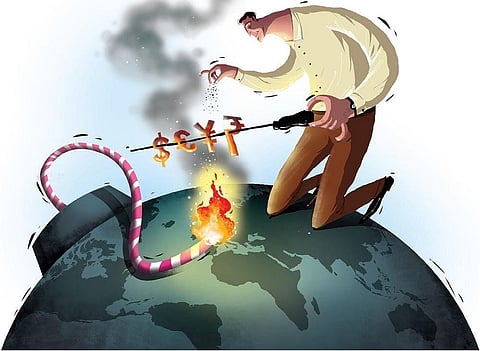

The North Indian Ocean surface is getting warmer, creating favourable conditions for severe cyclones, especially over the Arabian Sea. Dr Roxy Mathew Koll, Climate Scientist at the Indian Institute of Tropical Meteorology, explains the phenomenon to Jitendra Choubey. Excerpts:
As Cyclone Biporjoy was recurving, it was relatively difficult to predict its path. How do you explain it?
The upper-atmospheric winds mostly steer the path of a cyclone. It is not clear if climate change has any direct impact on the steering winds in the Arabian Sea. However, the warm sea surface temperatures and high moisture supply that kept the cyclone alive for a longer time is due to the ocean warming in response to climate change.
Why is there a significant change in the duration, intensity and accumulated cyclone energy (ACE) of cyclones in the Arabian Sea but not in the Bay of Bengal?
Generally, we used to have one cyclone every two years in the Arabian Sea and three-four cyclones every year in the Bay of Bengal. Now, due to ocean warming, the frequency and intensity of cyclones have increased in the Arabian Sea, while it has remained almost the same in the Bay of Bengal. Another factor is that the amount of moisture available in the mid-troposphere over the Bay of Bengal has slightly decreased.
The speed of cyclone movement in the Arabian Sea has decreased. Why?
We know that cyclone translation speed has decreased in the Arabian Sea, and the cyclones feed on warmer ocean temperatures. But we do not clearly understand why they are moving slowly. This might be related to the upper-atmospheric winds that steer the cyclones.
Does climate change cause stronger El Nino conditions? Is rising SST contributing to El Nino?
El Niños’ frequency remains the same—they appear every 5–7 years, but due to climate change, El Niños are now becoming stronger. An El Niño generally weakens the trade winds, dampens the monsoon circulation, and gives reduced rainfall to the Indian subcontinent—similar to what is happening right now.
Does climate change shape the duration of cyclones in Arabian Sea?
The lifespan of cyclones in the Arabian Sea has increased by 80% in the past four decades. This is largely attributed to the warming of the Arabian Sea. Cyclones derive their source of energy from the warm tropical waters. Now with exceptionally warm waters in Arabian Sea, these cyclones can stay alive for long